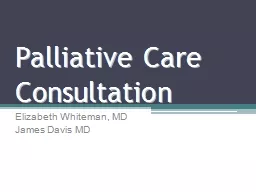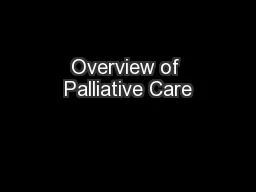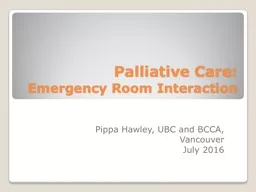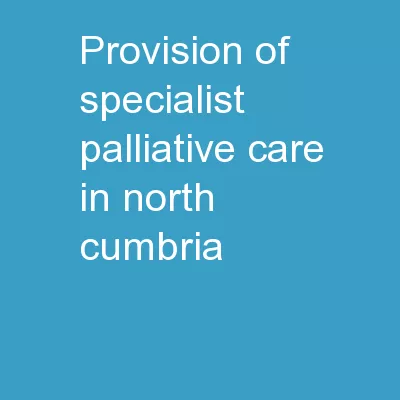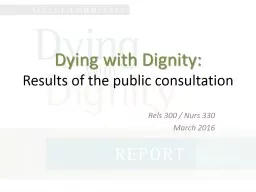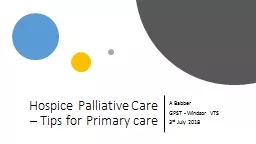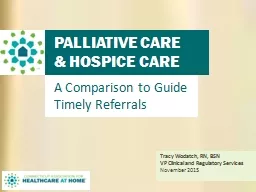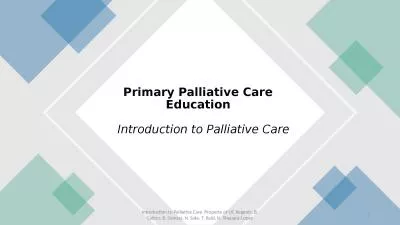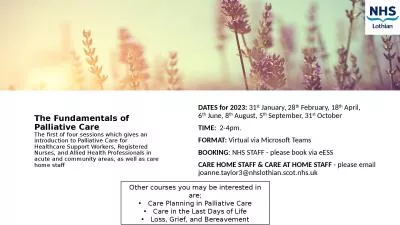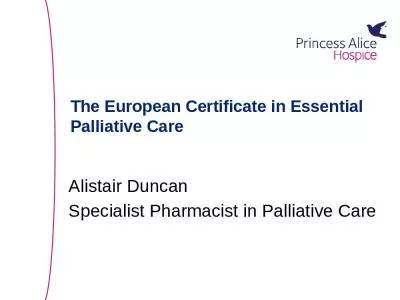PPT-Palliative Care Consultation
Author : pagi | Published Date : 2022-06-01
Elizabeth Whiteman MD James Davis MD Goals and Objectives Provide effective consultation Improve Communication skills with primary team Be able to assess patient
Presentation Embed Code
Download Presentation
Download Presentation The PPT/PDF document "Palliative Care Consultation" is the property of its rightful owner. Permission is granted to download and print the materials on this website for personal, non-commercial use only, and to display it on your personal computer provided you do not modify the materials and that you retain all copyright notices contained in the materials. By downloading content from our website, you accept the terms of this agreement.
Palliative Care Consultation: Transcript
Download Document
Here is the link to download the presentation.
"Palliative Care Consultation"The content belongs to its owner. You may download and print it for personal use, without modification, and keep all copyright notices. By downloading, you agree to these terms.
Related Documents

